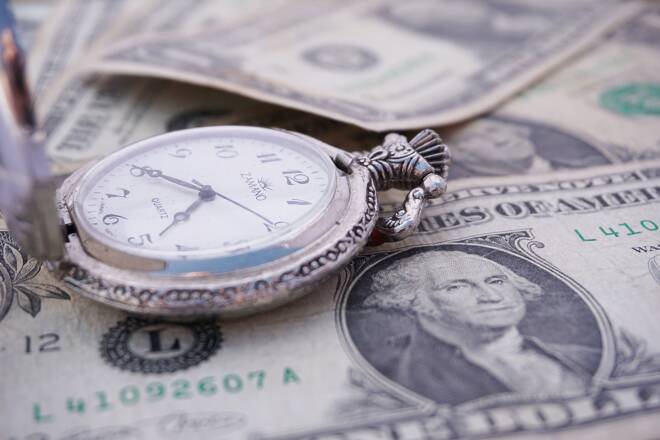Advertisement
Advertisement
Can the Dollar Recover from Its Latest Beating?
By:
The FOMC statement provided some good news and no news on Wednesday, with the good news being a positive for risk appetite, as the FED talked up the U.S
The FOMC statement provided some good news and no news on Wednesday, with the good news being a positive for risk appetite, as the FED talked up the U.S economy, supporting U.S equities, whilst the bad news was the lack of commitment on a timeline for kicking off the balance sheet sell-down, something that the markets had been demanding, only to be disappointed, the change in language being from starting this year to relatively soon being as far as the FOMC was willing to go. Adding to the negative sentiment towards the Dollar would have also been a shift in language in relation to inflation, suggesting less transitory softness, the combinations of which lead to the Dollar Spot Index slumping by as much as 0.76% before making a slight recovery by the close.
The Asian markets responded to the statement in kind this morning, with the fact that economic conditions are a factor to consider in determining that timing in the FED commencing its balance sheet sell-down another issue, following the IMF’s downward revision to U.S growth projections for this year and next year.
Macroeconomic data in the coming weeks is going to need to impress for the Dollar to begin finding its feet and for the markets to begin considering September as a starting point for the FED.
It’s been a relatively good start to the week on the data front out of the U.S, with July consumer confidence on the rise and private sector PMIs holding their ground, but following what is expected to be acceptable growth in the 2nd quarter, well short of the numbers that had been thrown around going into the 2nd quarter, economic indicators are going to need to reflect an acceleration in growth at the start of the 3rd.
The good news for some is that Trump is winning the currency war, with the Dollar continuing to struggle, which was one of the administration’s objectives, though the path to Dollar weakness was perhaps not the chosen one, investigations into the U.S President and the team certainly contributing to the Dollar’s demise.
A weaker Dollar and a positive global economic outlook should provide more favourable trade terms for the U.S economy, though with such voluminous consumer appetite for foreign goods, rising costs for imported goods may lead to a tightening of the purse strings, though the U.S consumer has a long way to go before encountering similar price pressures as those faced by the British consumer.
This afternoon’s goods trade balance for June will be of particular interest, the weaker Dollar needing to lead to a continued narrowing in the trade deficit in the months ahead, with June durable goods orders that are also scheduled for release this afternoon, providing the markets with some guidance on demand for U.S goods.
We will expect the Dollar to struggle through to this afternoon’s stats, with very little else for the markets to consider following the FOMC statement, Germany’s GfK Consumer Climate figures for August the only stats scheduled for release through the European session.
For the EUR and the other majors, central banks including the ECB and the RBA will be watching the Dollar closely, with persistent Dollar weakness driving the EUR to $1.17 levels and the AUD to $0.80 levels, the moves coming despite the respective central banks attempting to talk down any suggestions of a shift in monetary policy, currency strength a concern for both in consideration of trade terms, with both economies certainly dependent upon trade.
Until there is any hint of a Dollar revival, while the FED’s timing of the balance sheet will be at the top of the markets’ list of key drivers for the currency markets, consideration may need to be given on what the effects of continued Dollar weakness will have on monetary policy elsewhere and what further weakness in the Dollar could mean for trade based economies such as those of Australia and the Eurozone.
At the time of the report, the Dollar Spot Index was down 0.36% at 93.339, with today’s stats unlikely to be good enough to reverse the declines, with the EUR up just 0.09% at $1.1744. Any upside for the Dollar will likely to come from dip buying rather than a reinterpretation of the FOMC statement.
About the Author
Bob Masonauthor
With over 20 years of experience in the finance industry, Bob has been managing regional teams across Europe and Asia and focusing on analytics across both corporate and financial institutions. Currently he is covering developments relating to the financial markets, including currencies, commodities, alternative asset classes, and global equities.
Did you find this article useful?
Latest news and analysis
Advertisement
